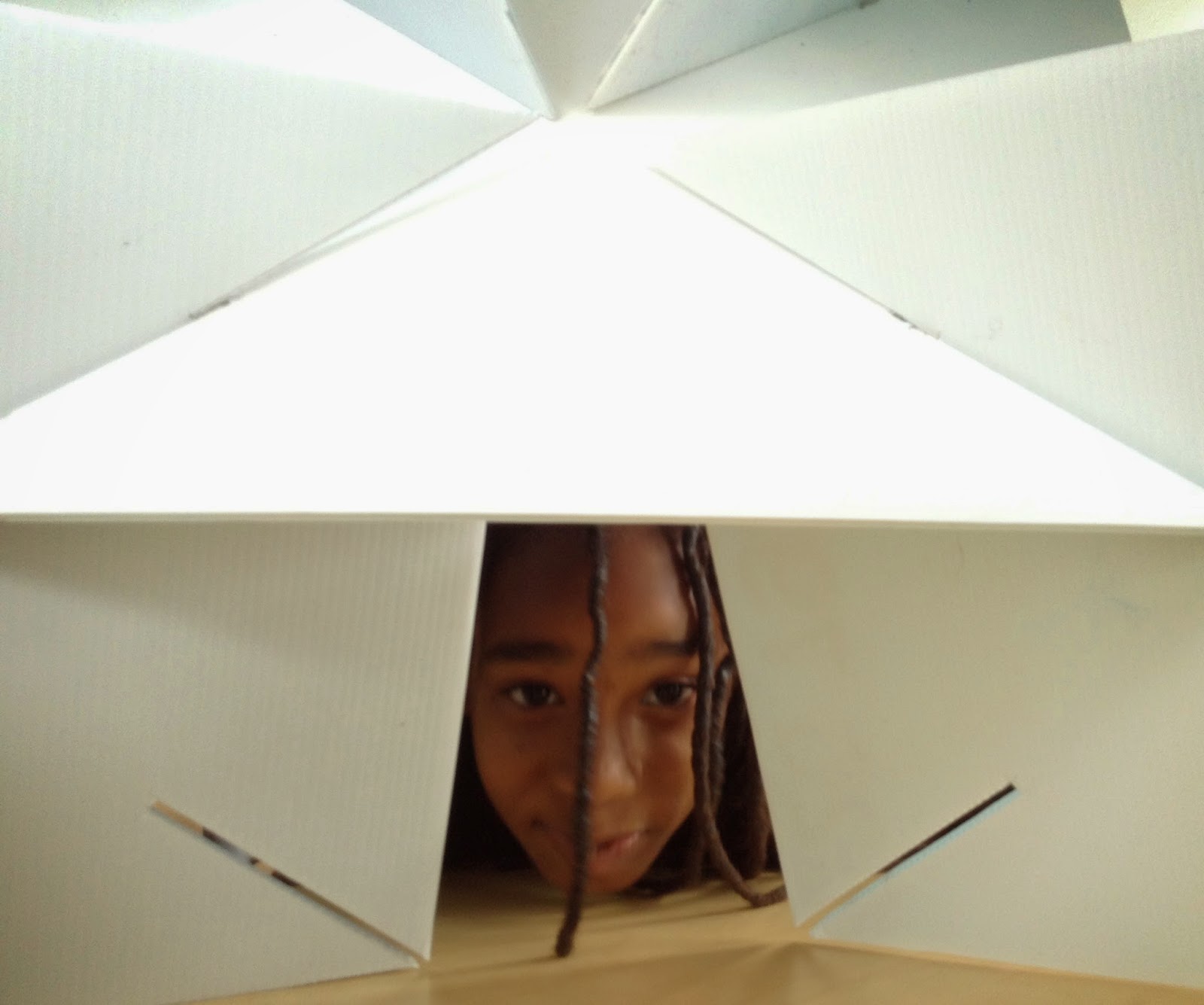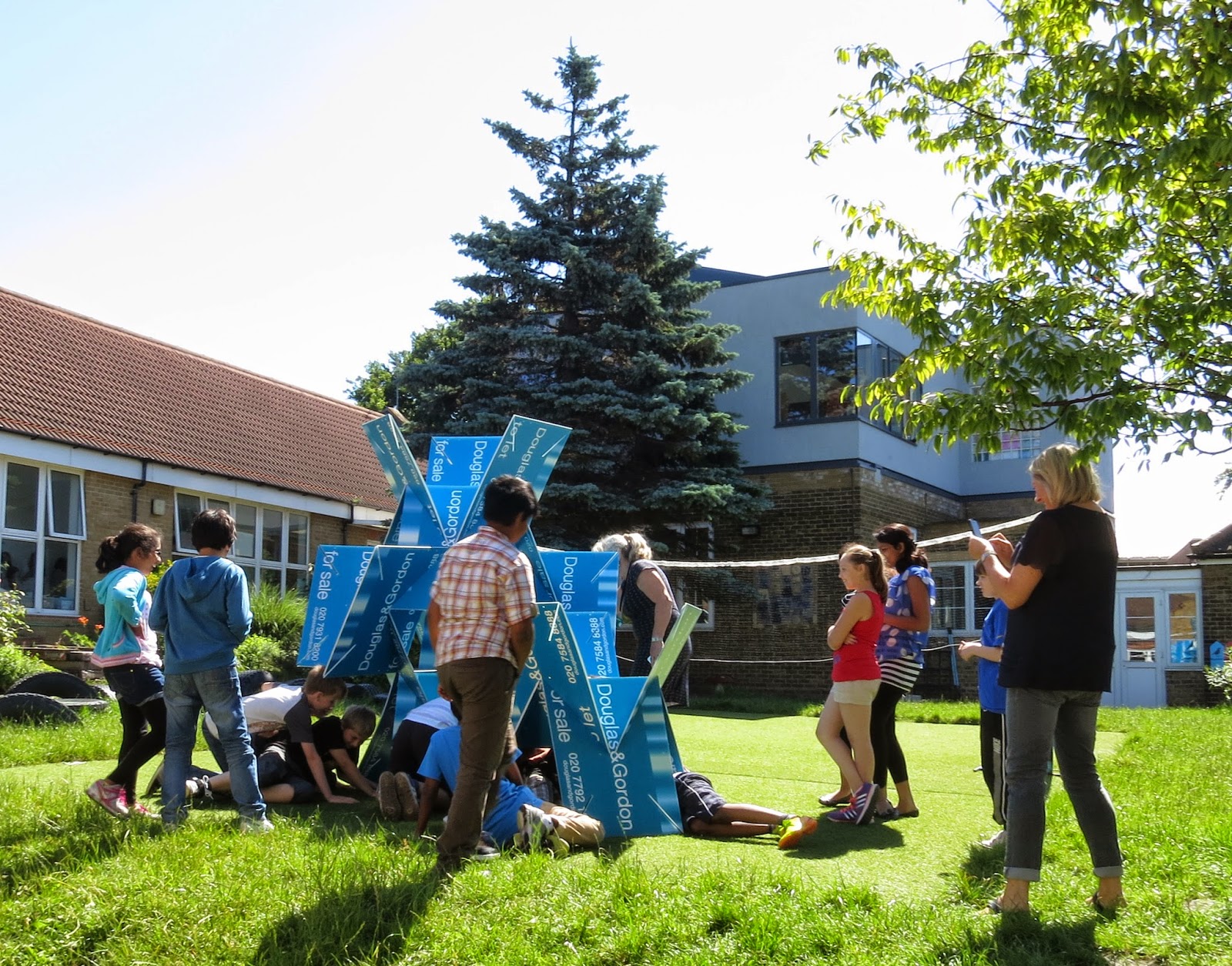For our
Architecture for Kids workshops at
Furzedown Primary School, we were lucky to acquire a set of estate agents boards, on their way to the recycling centre. We wanted to see how we could take these two-dimensional (flat) sheets and give them three-dimensional qualities and structural integrity, with as little adjustment as possible. One solution we came up with uses interlocking diagonal slots which means they can achieve a free-standing structural form with three boards (using structural triangles).
After receiving the boards, we investigated how we could work with them using scaled down card pieces, and card people to give a relative size. Lots of different methods of linking them were tried, with some more successful than others.
 |
| Testing structure and space with scaled down card pieces. |
The diagonal slotted solution seemed to work the most efficiently, although with the connections being on the corners, it does not conform to our usual preconceptions of a vertical and horizontal working world.
Before cutting the actual boards we trialled some quarter size pieces using the off-cuts from the
chairs we made earlier.
 |
| Trials with quarter size boards. |
The kids enjoyed the unconventional spaces they produced and the differences in light that each differently angled surface produced: Lots of enthusiasm for creating different structures.
 |
| Investigating the structural and sculptural spaces. |
The full size boards have become a bit of a hit at the school, beyond the Architecture workshops. At each break time and lunch time they have become a popular activity where groups of friends can play together to make spaces, and create their own designs.
 |
| Testing out the boards for the first time and investigating how they work, and the spaces they create. |
It's also proven to make a useful team building exercise. When groups of children work together with a set of boards, no one can be the dominant instructor, and no one can be the follower. Because of the way they fit, balance, find structural integrity and make spaces in unusual ways, it turns in to a very collaborative process where each person holding a board gives instruction and works with feedback to find a solution.
 |
| Teams working with the boards. You have to be hands-on to understand how they work. |
On hot summer days they are great for pitching up a quick shelter, to chill with friends and and enjoy lunch.
 |
| Putting a quick base up to discuss what really matters... |
 |
| Or a space for one. |








